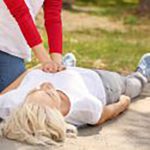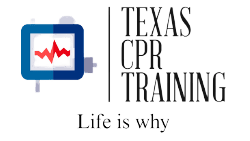
There’s no doubt about it — CPR obviously saves lives! That’s not all, though. Learn some things that you probably didn’t know with these CPR facts.
CPR, or cardiac pulmonary resuscitation, has been used as early as the 1700s. Since then, the method has saved countless lives.
Only 54% of Americans claim that they know how to perform CPR, but only 11% actually knew the correct pace for chest compressions. If you’re curious about CPR, what it is, and how helpful it is, keep reading to learn some fascinating CPR facts.
What is CPR?
CPR is short for cardiac pulmonary resuscitation and dates back to the 1700s according to the Society for Recovery of Drowned Persons in Amsterdam. The society started looking for a way to save people who were drowning and began trying mouth-to-mouth resuscitation. The method eventually came to the United States.
In 1891, Dr. Friedrich Maass used chest compressions successfully on humans. Since the 1960s, the American Heart Association has advocated for physicians and laypeople to learn CPR.
10 CPR Facts You Need to Know
How does CPR work? Is it only for heart attacks, or does it have other practical uses? Here are a few things you might find interesting.
1. Survival Rate Increases
CPR increases someone’s chance of survival. Immediately performing CPR and calling 911 after someone experiences a heart attack doubles, or even triples, the possibility of the person surviving.
2. You’re Protected if You Give CPR
Many people will not use CPR because they’re afraid of interfering, or because they’re worried that they could face legal consequences. However, Good Samaritan laws are in place to protect those people. Each state’s requirements differ, so be sure to brush up on your local laws before you perform CPR in a public setting.
3. Not Just For Heart Attacks
While CPR focuses mainly on those who have heart difficulties, is use reaches far beyond that. Those who are choking or drowning can benefit from CPR. Smaller children often experience choking and will need someone trained in CPR to help them.
4. Anyone Can Do It
The success of CPR depends on body strength, but that doesn’t limit its use to adults only. Children as young at nine years old can learn – and complete – CPR on others. Teaching children CPR can be beneficial in situations where it’s hard to find an adult to help.
5. Certification?
Surprisingly, you don’t need any certification to understand CPR. With that said, you do need education. You can learn the technique and new methods by taking classes every couple of years.
Understanding the material is only part of the process. While you can learn the basics of CPR through reviewing books, pamphlets, or websites, to grasp how CPR works, you’ll need hands-on practice.
6. Every Moment Counts
Oxygen is vital to the brain. When a person loses consciousness, there’s a lack of oxygen to the brain, so acting fast and performing CPR is essential. The survival rate drops by 10% for every minute the patient is without oxygen.
If you witness someone pass out or suffering from a heart attack, think and move quickly, because every moment counts.
7. Compressions
Some people believe that CPR is about giving mouth-to-mouth, but that’s not necessarily true. Chest compressions are the highlight of CPR. Unconscious persons still probably have oxygen in their body, and by pushing on their chest you’re sending it to their brain and keeping them alive until help arrives.
8. Not Only The Heart
Chest compressions are a part of CPR, but it’s a misconception that its initially what causes a person to regain consciousness. The purpose of CPR is to get blood filled with oxygen to the brain and other organs.
9. Loved Ones
The chances of you having to deliver CPR to a stranger are low. You’re more likely to use CPR on someone you know or someone in your household. This is because most heart attacks happen at home, and most choking accidents happen there as well. Remember, you aren’t learning CPR to help strangers; it’s another tool at your disposal to protect your family.
10. AEDs Work, Too
Even without CPR training, Automated External Defibrillators or AEDs can get the job done. Thankfully, with the push of a button, the AED will guide you on how to use it. You can use AEDs in conjunction with hands-on CPR to improve someone’s chances of survival.
How Do I Know if Someone Needs CPR?
Sometimes it’s hard to determine if a person needs CPR. Here are some warning signs that indicate CPR is required:
- If the person collapses
- There is no pulse and the person is unresponsive to you trying to wake them.
- Struggling to breathe or not breath at all
Once you see the person responding to CPR through movement or breathing, or when trained professionals arrive and can administer necessary practices to help the person, stop CPR.
Should Employees Know CPR?
While most cases of using CPR happen at home, 5% of heart attacks happen at work.
Provide CPR classes for your employees is beneficial because it creates a safer environment. Preparing your employees to deal with a medical emergency gives them peace of mind.
CPR also reduces your liability for insurance purposes. When an insurance company sees the preventative measures you take to ensure safety, your liability decreases.
How Do I Take A CPR Class?
It’s easy to take a CPR class. You can find one online or at a local hospital. Most courses will take several hours to complete but are usually done within a couple of days or over a weekend.
They offer flexible hours as well for busy people. These are basic classes, however, so if you want more in-depth training, you’ll need to take classes from a professional organization.
CPR: Learn it to Save Lives
Hopefully, these CPR facts have given you some insight into CPR and its importance and also inspired you to try a CPR class. CPR can save lives if it’s performed correctly, so people can get the help they need to live a longer and healthier life.
Do you want to feel prepared to save someone’s life? Visit our website to check out our CPR class schedule today!
Texas CPR Training, CPR of Dallas, www.texascpr.com
American Heart Association
Home 💙 CPR/First Aid/AED in person 💙 CPR/First Aid/AED virtually 💙 BLS Healthcare Provider CPR 💙 Become an American Heart Instructor 💙 About 💙 Gallery 💙 Blog 💙 Contact Us
